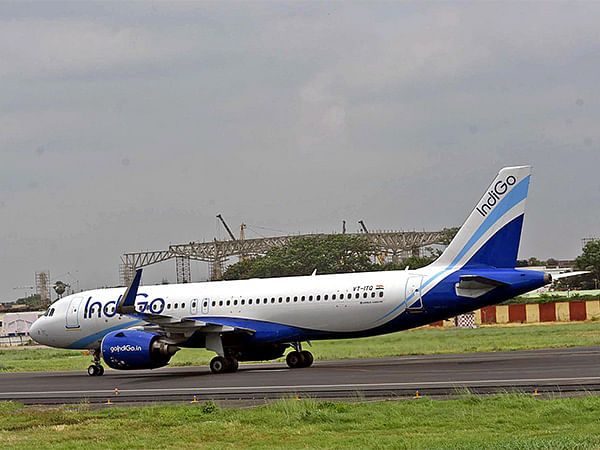Kathmandu [Nepal], September 4 (ANI): IndiGo Airlines has become the first Indian carrier to adopt the Required Navigation Performance Authorization Required (RNP AR) flight procedure for operations in Kathmandu, which enables safer and more efficient landings at the Tribhuvan International Airport, which is nestled in a valley surrounded by the Himalayas.
In an exclusive interview with ANI, Captain Rajiv Singh, Head of Training at IndiGo, claimed the air service provider to be the first amongst Indian carriers flying to Kathmandu to adopt the RNP AR flight procedure.
“Fortunately, today was the day when we were able to do it (validation flight). We also are proud to say that we are the first airline from India to carry out this approach. So we are happy about it,” Captain Rajiv Singh told ANI soon after the conduct of the validation flight in Kathmandu.
The RNP AR technology is specifically designed for airports in geographically challenging and high-altitude regions, such as the Tribhuvan International Airport. The airport’s table-top runway and surrounding terrain require pilots to exercise extra caution during take-off and landing.
“Today, we carried out the validation flight for an RNP AR (Required Navigation Performance Authorization Required) approach, which basically is an advanced approach where we have a lateral separation from the terrain, which eventually turns out to be a safer approach which is officially more efficient,” Captain Singh added.
Captain Shweta Singh and Seema Jhamnani from Directorate General of Civil Aviation, India and Captain Shailaja Munankarmi and another official from Civil Aviation Authority of Nepal were onboard the validation flight.
The new system provides more assurance about safety than traditional approaches, which have been in practice for a long time.
“In terms of safety, the traditional way of avoiding the terrain is to fly-over the mountains and approach a dive-down so you’re in the profile for the landing. In the RNP AR approach, because of higher accuracy with advanced equipment, the use of GPS and on-board equipment, we are able to avoid the terrain laterally. So, we can commence a profile earlier than what would the traditional approach be, that allows stabilisation for the approach and which eventually would turn out into safer landings and a better margin from terrains as well,” added Captain Singh.
Lying at an elevation of 4,390 feet above sea level, the Tribhuvan International Airport in Kathmandu can only be touched down by navigating through narrow passes, leaving little room for error. The steep descent required to land adds another layer of difficulty, demanding precise control and extensive experience.
“Apart from safety, this approach also enhances the operational reliability because it enables landing at lower melena, that is, lower visibility and lower cloud-based requirements. That enables the ATC (Air Traffic Controller) to manage air traffic better, which will also lead to more energy efficient approaches leading to less fuel expenditure, cutting carbon emissions, amongst other benefits,” Captain Rajiv Singh, Head of Training at IndiGo, told ANI.
The Tribhuvan International Airport poses unique challenges due to its location, with steep descents required to land and narrow passes to navigate through. The airport experiences heavy rainfall and thick fog during monsoon and winter, respectively, which can disrupt flight schedules. Wind patterns can also shift suddenly, leading to turbulence and crosswinds, making landing more hazardous. (ANI)
This report is auto-generated from ANI news service. ThePrint holds no responsibility for its content.




